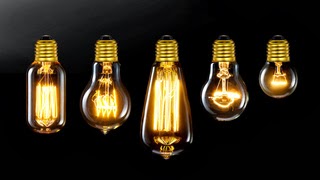In the matchup of wind turbine v. hurricane, our bets have traditionally been with the hurricane. But think about it this way: wind turbines are designed to suck energy out of wind. What if they could suck out so much energy that hurricanes like Katrina or Sandy never form in the first place—with the potentially destructive storm instead spun directly into electricity? That's the win-win situation posited in a new study from Stanford and University of Delaware researchers.
The study, published in the journal Nature Climate Change today, has been provoking scientists since it was first presented at conferences months ago. It's surprising, in part, because it inverts how we usually think about offshore wind turbines.
"Will the turbines be destroyed? That's the main question people ask," says Mark Jacobson, the study's first author. According to their model of Hurricanes Isaac, Katrina, and Sandy, though, offshore wind turbines could have dissipated the storms before their winds even got up to destructive speeds. And the turbines would have turned that wind into electricity, a benefit over other hurricane defense strategies like sea walls.
Will it work? How?
There are exactly zero operating offshore wind farms in the United States right now— northwestern Europe has most of the existing ones—and the farms in the study are unthinkably massive, up to half a million turbines. As a matter of practicality and politics, this isn't going to happen anytime soon. But if we want to dream big about energy policy and hurricane defense, then this is that dream.
And it could theoretically work, according to other scientists. "The study is highly academic and idealized," says Robert Vautard of the Climate and Environment Science Laboratory in France, although "the result is believable." It's all based on a computer model, but it's the best computer model we have.
Think about how quickly hurricanes dissipate on land, says Julie Lindquist, an atmospheric scientist at University of Colorado, Boulder. That's, in part, because the sea surface is very smooth but land is not. "You're essentially building large forests of slender trees in the water," says Lindquist. Of course, that will affect the climate during non-hurricane season, too, but that's a whole other study to do.
When it comes to natural disasters, engineers have come up with ways to withstand them, but never actually tame them. These hurricane-harnessing wind turbines offer a seductively elegant and presently impractical solution to it all. It's possible to imagine—and also question—the potential of tens of thousands of turbines spinning offshore to power and guard our homes from hurricanes. More here.

















